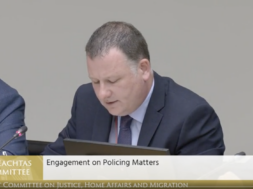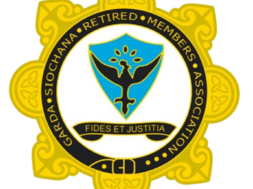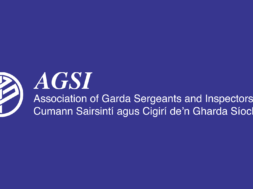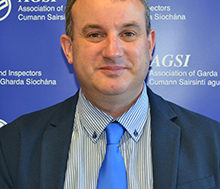CHECK AGAINST DELIVERY
Criminal Law (Sexual Offences) Bill 2015
Second Stage Speech – Seanad Éireann
Minister for Justice and Equality, Frances Fitzgerald, TD
6 October 2015
A Chathaoirligh, Senators
I move that the Bill be read a second time.
I am very pleased to present this Bill to you today.
This Bill is the most comprehensive and wide ranging piece of sexual offences legislation to be introduced in almost a decade. It strengthens existing law to combat child pornography, the sexual grooming of children, incest, exposure and other offensive conduct of a sexual nature.
Not only will the provisions in this Bill target those who target children, there is also recognition of the needs of victims of sexual offences and those who assist them. In this respect, I am particularly pleased that provisions are included in this Bill which, when enacted, will regulate and bring certainty to the disclosure of counselling and therapy records in sexual offence trials. In addition, amendments to criminal evidence legislation acknowledge the difficult experience which a trial process may be for the victim of a sexual offence.
Other measures include the introduction of harassment orders prohibiting convicted offenders from contact with their victim.
Finally, and an issue which has already been the subject of considerable debate, the Bill will criminalise those who purchase sexual services.
All of the provisions in this Bill – which I will outline in more detail – are the culmination of a long process and wide consultation. As well as implementing the recommendations of a number of Oireachtas Committees, this Bill brings Irish law more closely into line with our international obligations.
There are, however, and I want to clearly acknowledge, provisions absent from the Bill which were approved for inclusion – most notably provisions to replace section 5 of the Criminal Justice Act 1993 in relation to the protection of mentally impaired persons and provisions to amend and update the Sex Offenders Act 2001. I would like to assure the members of the House that these are not matters which have been discarded.
The repeal of section 5 of the Criminal Justice Act 1993 was the subject of a Bill brought forward by Senator Zappone last year. As I acknowledged when we debated that Bill, section 5 – titled protection of mentally impaired persons – is of its time and should be repealed. It fails to facilitate the full participation in society of disabled persons and the full expression of their human rights. Achieving the necessary balance between those rights and ensuring appropriate protection is crucial. However, I can assure the House, and in particular Senator Zappone, that I will be bringing forward amendments in this House to this Bill to address section 5.
In relation to the amendments to the Sex Offenders Act 2001, the drafting of these provisions is also continuing. Legal issues which arose during drafting as well as the need to update the provisions to reflect operational advancements have been the primary cause of delay. However, many of those matters are now resolved. It is my intention that these provisions will be brought forward as a separate piece of legislation amending the 2001 Act. I assure the House that bringing forward the amendments to the 2001 Act is an absolute priority.
Turning to the Bill. Given the wide-ranging nature of this Bill, it is not possible to outline every aspect and detail but I am confident that the provisions will be thoroughly considered during the further discussions today and at later stages.
In my view the provisions contained in Part 2 of this Bill which address the sexual exploitation of children are among the most important criminal law provisions to be brought forward. We must take every step possible to combat and target those who engage in the sexual exploitation of children, and in those activities which support and promote the sexual exploitation of children.
While we already have significant legislation in place to target those who prey on children, the provisions under Part 2 are a further step.
Contained in this Part are measures which strengthen existing law in the area of child pornography as well as new offences targeting child sexual grooming which focus on those who use modern technologies to engage with children with the purpose ultimately of sexually exploiting those children.
Section 3 is an offence of obtaining or providing a child for the purpose of sexual exploitation. This offence builds on the existing offence of sexual exploitation under the Child Trafficking and Pornography Act 1998. In terms of paying a child or another person for the purpose of sexually exploiting a child the provision is clear that such would include “any other form of remuneration or consideration” other than monetary. For example, the giving of a computer game or such to a child would fall under the provisions of this section. The section also criminalises offering a child or obtaining a child without reference to monetary or other form of remuneration.
In order to target, at the earliest possible point, any intention to exploit a child, it is important that the law sets out in detail those initial acts or steps which a predator may take to gain access to a child.
What constitutes sexual exploitation is defined in section 2 and includes engaging a child in prostitution or child pornography, the commission of a sexual offence against the child or causing another person to commit such an offence.
In line with the offence of sexual exploitation under the 1998 Act, and the requirements of an EU Directive on combating the sexual abuse and sexual exploitation of children, the offences targeting these pre-emptive steps to the exploitation of children apply to children up to the age of 18 years.
Section 4 closes a possible gap in existing law in relation to the sexual assault of children. Under the law as it stands, a child under the age of 15 years cannot consent to an act which, without consent, would amount to sexual assault. While the touching of a child would amount to sexual assault, this section clarifies that a person who invites a child to touch them or another person is committing an offence. The penalty of up to 14 years is the same as for sexual assault.
Sections 5, 6, 7 and 8 are offences connected with the sexual grooming of children. Sections 5 and 6 provide for offences relating to sexual activity in the presence of a child or causing a child to watch sexual activity. Familiarising children with such activity or material can take place during the early stages of the predatory process leading to more serious forms of child sexual exploitation.
Section 7 is an offence which targets the point at which initial contact has been made with a child by a person intent on the sexual exploitation of that child. The offence arises where the person then meets with the child or makes arrangements to meet with the child. Again, this targets activity prior to actual exploitation of a child.
Section 8 contains two new offences addressing the use of modern communication technologies in the grooming and exploitation of children. Modern communication technologies and social media generally are incredibly useful tools for everyone. However, children and young people in particular are vulnerable to unwanted and seemingly innocuous contact by those who may prey on them. The offence under this section is an acknowledgement of that risk. It criminalises the initial stages of grooming where communication via, for instance, the internet is the first step in facilitating the sexual exploitation of children. Section 8 offers further protection to children from unwanted advances by including an offence of sending sexually explicit material to a child by mobile or internet communication.
The seriousness of these offences is reflected in the potential penalties which may be imposed of between 10 and 14 years.
Sections 9 to 14 amend the Child Trafficking and Pornography Act 1998. There are already significant offences under Irish law relating to child abuse material or child pornography as defined under the 1998 Act and the provisions in the Bill strengthen those provisions. In terms of new offences, recruiting or causing a child to participate in a pornographic performance is now a specific offence as is attending a live pornographic performance including viewing such by means of information and communication technology.
I would also like to draw attention to the provisions in sections 16 and 17 of the Bill which provide for offences of a sexual act with a child below the age of 15 and 17 respectively. These offences replace the existing defilement offences under the Criminal Law (Sexual Offences) Act 2006. There are two notable amendments to the existing offences. Firstly, there is a change in relation to the defence of ‘mistake as to age’.
Under the 2006 Act, an accused could rely on a defence of honest belief as to the age of the complainant. This is a subjective test requiring the accused to prove that he or she honestly believed that the other party had not reached the specified age.
Under this Bill, the defence will be one of reasonable mistake as to the age of the complainant. This is an objective test under which the court shall consider whether in the circumstances of the case a reasonable person would have concluded that the child had attained the required age.
The second issue I would like to highlight is the recognition in the Bill of under age, consensual, peer relationships through the introduction of a ‘proximity of age’ defence. Under this provision, a person charged with an offence of engaging in a sexual act with a person between the ages of 15 and 17 years can rely on a defence where the act is consensual, non-exploitative and the age difference is no more than two years.
Part 3 of the Bill deals with the criminalisation of the purchase of sexual services. I will return to this Part shortly but would first like to outline some of the main provisions contained in the other parts of the Bill. Part 4 of the Bill modernises and restates the law in relation to incest. It corrects a gender anomaly with regard to the penalties for an offence of incest by a male and incest by a female. At present, incest by a male is punishable by a maximum sentence of life imprisonment whereas incest by a female is punishable by a maximum sentence of up to 7 years imprisonment. Under this Part, both offences will be subject to penalties of up to life imprisonment.
Part 5 of the Bill provides for a number of amendments to the Criminal Evidence Act 1992 designed to support and protect victims of sexual offences during the criminal trial process. Measures to further protect child victims of sexual offences from any additional trauma during the giving of evidence include giving evidence from behind a screen. Provision is also included preventing a person accused of a sexual offence from personally cross-examining a person under the age of 14 years of age unless the interests of justice require such cross-examination. A court may also direct that an accused may not personally cross-examine a child between the ages of 14 and 18 years. Safeguards to protect the rights of the accused to a fair trial are included such as directing the jury that no inferences may be drawn from the fact that an accused has been prevented from conducting such a cross-examination.
A further provision in this Part which I would like to highlight, and which I mentioned earlier, is the provision under section 33 on the disclosure of third party records in certain trials. The appropriateness of the disclosure of such records will be the subject of a pre-trial hearing and any disclosure will, while respecting the rights of an accused to a fair trial, take account of the right of a victim of a sexual offence to privacy. Only records, or parts thereof, which are likely to be relevant to an issue at trial and which are necessary for the accused to defend the charges against him or her should be disclosed.
Part 6 of the Bill deals with amendments to existing jurisdiction legislation to include new offences created under this Bill to enable the prosecution of offences committed against children outside the State by citizens of the State or by persons ordinarily resident in Ireland.
I would like to draw attention to two provisions in Part 7 of the Bill. Section 39 contains an offence of exposure and offensive conduct of a sexual nature. The existing offence of public indecency has been struck down by the courts on the grounds of vagueness and the new offences contained in section 39 clarify the acts and activities which give rise to an offence.
Section 40 introduces harassment orders whereby a court can impose an order prohibiting a convicted sex offender from contacting or approaching his victim for a specified period of time. The order can be imposed at the time of sentence or at any time prior to the offender’s release. The order may be imposed where the court is satisfied that the offender has behaved in such a way as to give rise to a well-founded fear that the victim may be subject to harassment or unwanted contact by the offender such as would give rise to fear, distress or alarm or amount to intimidation.
I think the House will agree that the provisions of this Bill are a significant step forward in targeting those who would abuse children as well as offering some further protection to victims of sexual offences.
Returning now to Part 3 of the Bill. This Part contains two sections providing for the criminalisation of the purchase of sexual services. This is a matter which has already been the subject of considerable debate both inside and outside these Houses, and indeed beyond this State.
The two offences contained in the Bill – the first a general offence of paying to engage in sexual activity with a prostitute and the second the more serious offence of paying to engage in sexual activity with a trafficked person – are the result of considerable and extensive public consultation by my Department but, primarily, by the Joint Oireachtas Committee on Justice, Defence and Equality which recommended similar proposals in 2013.
In deciding to put forward these provisions I have considered all sides of the debate. I have considered the experience of those states who have introduced similar measures and those states who have addressed prostitution in a different way.
Firstly, let me be clear as to what these provisions do. It will be an offence for a person to pay, offer or promise to pay, a person for the purpose of engaging in sexual activity with a prostitute. The person providing the sexual service – the prostitute – will not be subject to an offence.
The purpose of introducing these provisions is primarily to target the trafficking and sexual exploitation of persons through prostitution. Both the Council of Europe and the European Parliament have recognised the effectiveness of the criminalisation of the purchase of sexual services as a tool in the fight against human trafficking. However, even to leave aside this unquestionable objective, there is undoubtedly evidence of wider exploitation of persons involved in prostitution, outside of those trafficked, such as those coerced or otherwise forced, through circumstances, to engage in the activity.
The most direct way of combating this form of exploitation is to send the message to those who pay for these services, and who ignore the exploitation of the women and men involved, that their behaviour is unacceptable and that their behaviour supports the exploitation of other people.
There are many aspects to the debate on these provisions which I expect will be raised here today and during the passage of this Bill. Issues regarding the impact of these provisions on the safety, health and well being of those who work in prostitution. Concerns that these changes will drive prostitution further underground. Arguments that women and men can freely and voluntarily provide these services without experiencing the exploitation which I believe is widely and normally associated with prostitution.
In deciding to put forward these proposals I have listened to all sides of the debate and I am convinced that to target the exploitation associated with prostitution requires targeting those who demand those services.
I look forward to hearing and discussing all of these issues with the members of the House today and in the further debates on this Bill.
Finally, in recognising the exploitation associated with prostitution, I would also like to inform Senators that I will bring forward amendments in this House which will further decriminalise the women and men involved in prostitution by removing those who offer sexual services from the existing offences of solicitation and loitering for the purpose of prostitution.
Before I finish, I would like to thank the members of this House many of whom have contributed to the content of this Bill through their work both inside and outside this House. I would also like to thank the many victim support groups and community groups who have contributed to the development of this Bill over a number of years.
This Bill is a reflection of advances in technology, research, experience and debate. Regardless of the focus of the debate today or later, inside this House or outside it, let us not forget the primary purpose of this Bill.
To substantially strengthen our law to target those who target our most vulnerable – our children – and to send a message to all victims of sexual offences that we recognise the unfathomable harm and trauma inflicted upon you, and we support you.
ENDS









